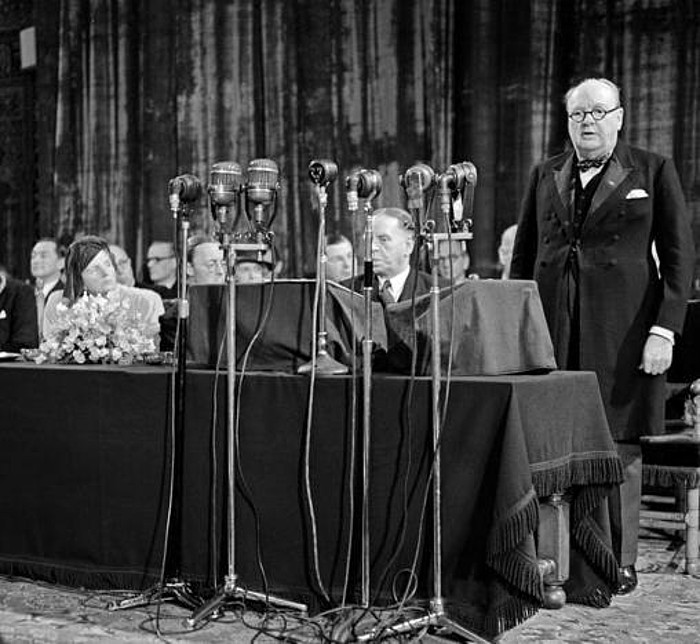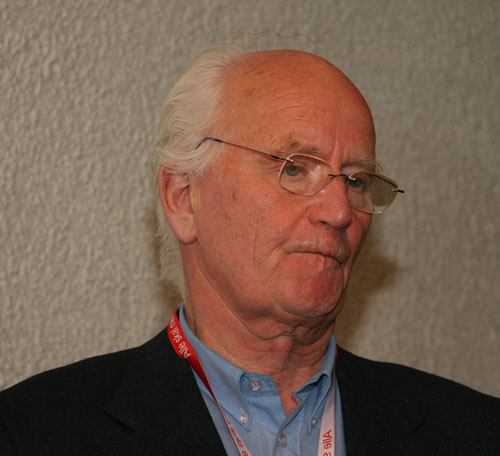|
Gaboš
Gaboš ( sr-Cyrl, Габош) is a village in Vukovar-Syrmia County, Croatia, with a population of 516. The settlement was originally established as a pustara, a Pannonian type of hamlet. Gaboš became a colonist settlement was established during the land reform in interwar Yugoslavia. History In July 1943, during the World War II in Yugoslavia, Nazi forces destroyed agricultural machinery, including threshers, across several villages, including Gaboš. Education Branch school of Elementary school Markušica is located in Gaboš. Education at local schools is in Serbian. Demographic history According to the 1991 census, the village was inhabited by a majority of Serbs (87.66%), and minority of Croats (7.37%) and Yugoslavs (2.27%). See also * Markušica Municipality *Church of the Nativity of the Virgin Mary, Gaboš Church may refer to: Religion * Church (building), a place/building for Christian religious activities and praying * Church (congregation), a local congrega ... [...More Info...] [...Related Items...] OR: [Wikipedia] [Google] [Baidu] |
Markušica
Markušica ( sr-Cyrl, Маркушица, , ) is a Settlement (Croatia), village and a municipality in Vukovar-Syrmia County in eastern Croatia. Markušica is located south of the river Vuka (river), Vuka and northwest of the town of Vinkovci. The landscape of the Markušica Municipality is marked by the Pannonian Basin plains and agricultural fields of wheat, maize, common sunflower and sugar beet. The modern day municipality was established in 1997 by the United Nations Transitional Administration for Eastern Slavonia, Baranja and Western Sirmium, UNTAES administration as one of new majority minority, predominantly Serb municipalities in order to ensure access to local self-government to Serb community in the region. Alongside Markušica it includes the villages of Gaboš, Karadžićevo, Ostrovo, Croatia, Ostrovo and Podrinje, Croatia, Podrinje. Before the United Nations administrator implemented anty-gerrymandering reorganization, Markušica and Podrinje were a part of the Tord ... [...More Info...] [...Related Items...] OR: [Wikipedia] [Google] [Baidu] |
Vukovar-Syrmia County
Vukovar-Srijem County (), Vukovar-Sirmium County or Vukovar-Syrmia County, named after the eponymous town of Vukovar and the region of Syrmia, is the easternmost Croatian Counties of Croatia, county. It includes the eastern parts of the region of Slavonia and the western parts of the region of Syrmia, as well as the lower Sava river basin, Posavina and Danube river basin Podunavlje. Due to the overlapping definitions of geographic regions, division on Slavonia and Syrmia approximately divides the county vertically into north-west and south-east half, while division on Posavina and Podunavlje divides it horizontally on north-east and south-west half. The county's seat is in Vukovar, a town on the Danube river while its biggest town and economic and transportation center is in Vinkovci, town with 33,328 inhabitants. Vinkovci served as a temporary ''de facto'' seat of the county during the Croatian War of Independence with some institutions still remaining in the town as of 2020. In ... [...More Info...] [...Related Items...] OR: [Wikipedia] [Google] [Baidu] |
Council Of Europe
The Council of Europe (CoE; , CdE) is an international organisation with the goal of upholding human rights, democracy and the Law in Europe, rule of law in Europe. Founded in 1949, it is Europe's oldest intergovernmental organisation, representing 46 member states from Europe, with a population of approximately 675 million ; it operates with an annual ordinary budget of approximately 500 million euros. The organisation is distinct from the European Union (EU), although people sometimes confuse the two organisations – partly because the EU has adopted the original Flag of Europe, European flag, designed for the Council of Europe in 1955, as well as the Anthem of Europe, European anthem. No country has ever joined the EU without first belonging to the Council of Europe. The Council of Europe is an official United Nations General Assembly observers, United Nations observer. Unlike the EU, the Council of Europe cannot make binding laws; however, the council has produced a numbe ... [...More Info...] [...Related Items...] OR: [Wikipedia] [Google] [Baidu] |
Populated Places In Vukovar-Srijem County
Population is a set of humans or other organisms in a given region or area. Governments conduct a census to quantify the resident population size within a given jurisdiction. The term is also applied to non-human animals, microorganisms, and plants, and has specific uses within such fields as ecology and genetics. Etymology The word ''population'' is derived from the Late Latin ''populatio'' (a people, a multitude), which itself is derived from the Latin word ''populus'' (a people). Use of the term Social sciences In sociology and population geography, population refers to a group of human beings with some predefined feature in common, such as location, race, ethnicity, nationality, or religion. Ecology In ecology, a population is a group of organisms of the same species which inhabit the same geographical area and are capable of interbreeding. The area of a sexual population is the area where interbreeding is possible between any opposite-sex pair within the area ... [...More Info...] [...Related Items...] OR: [Wikipedia] [Google] [Baidu] |
Church Of The Nativity Of The Virgin Mary, Gaboš
Church may refer to: Religion * Church (building), a place/building for Christian religious activities and praying * Church (congregation), a local congregation of a Christian denomination * Church service, a formalized period of Christian communal worship * Christian denomination, a Christian organization with distinct doctrine and practice * Christian Church, either the collective body of all Christian believers, or early Christianity Places United Kingdom * Church, a former electoral ward of Kensington and Chelsea London Borough Council that existed from 1964 to 2002 * Church (Liverpool ward), a Liverpool City Council ward * Church (Reading ward), a Reading Borough Council ward * Church (Sefton ward), a Metropolitan Borough of Sefton ward * Church, Lancashire, England United States * Church, Iowa, an unincorporated community * Church Lake, a lake in Minnesota * Church, Michigan, ghost town Arts, entertainment, and media * '' Church magazine'', a pastoral theology magazin ... [...More Info...] [...Related Items...] OR: [Wikipedia] [Google] [Baidu] |
Vukovar
Vukovar (; sr-Cyrl, Вуковар, , ) is a city in Croatia, in the eastern Regions of Croatia, regions of Syrmia and Slavonia. It contains Croatia's largest river port, located at the confluence of the Vuka (river), Vuka and the Danube. Vukovar is the seat of Vukovar-Syrmia County and the second largest city in the county after Vinkovci. The city's registered population was 22,616 in the 2021 census, with a total of 23,536 in the municipality. Name The name ''Vukovar'' means 'town on the Vuka River' (''Vuko'' from the Vuka River, and ''vár'' from the Hungarian language, Hungarian word for 'fortress'). The river was called "Ulca" in antiquity, probably from an Illyrian language. Its name might be related to the name of the river "Volga". In other languages, the city in German is known as ''Wukowar'' and in Hungarian as ''Vukovár'' or ''Valkóvár''. In the late 17th century, the medieval Croatian name Vukovo was supplanted by the Hungarian ''Vukovár''. In the Middle Ages, V ... [...More Info...] [...Related Items...] OR: [Wikipedia] [Google] [Baidu] |
Joint Council Of Municipalities
The Joint Council of Municipalities in Croatia (; ; abbr. ЗВО, ZVO) is an elected consultative sui generis body which constitutes a form of cultural Self-governance, self-government of Serbs of Croatia, Serbs in the eastern Croatian Podunavlje region. The body was established in the initial aftermath of the Croatian War of Independence as a part of the international community's efforts to peacefully settle the conflict in self-proclaimed Eastern Slavonia, Baranja and Western Syrmia (1995–1998), Eastern Slavonia, Baranya and Western Syrmia. The establishment of the ZVO was one of the explicit provisions of the Erdut Agreement which called upon the United Nations to establish its United Nations Transitional Administration for Eastern Slavonia, Baranja and Western Sirmium, UNTAES Provisional government, transitional administration. The Joint Council of Municipalities is not an autonomous administrative unit but a form of cultural autonomy in conformity with relevant Law of Cr ... [...More Info...] [...Related Items...] OR: [Wikipedia] [Google] [Baidu] |
Nazi Germany
Nazi Germany, officially known as the German Reich and later the Greater German Reich, was the German Reich, German state between 1933 and 1945, when Adolf Hitler and the Nazi Party controlled the country, transforming it into a Totalitarianism, totalitarian dictatorship. The Third Reich, meaning "Third Realm" or "Third Empire", referred to the Nazi claim that Nazi Germany was the successor to the earlier Holy Roman Empire (800–1806) and German Empire (1871–1918). The Third Reich, which the Nazis referred to as the Thousand-Year Reich, ended in May 1945, after 12 years, when the Allies of World War II, Allies defeated Germany and entered the capital, Berlin, End of World War II in Europe, ending World War II in Europe. After Hitler was appointed Chancellor of Germany in 1933, the Nazi Party began to eliminate political opposition and consolidate power. A 1934 German referendum confirmed Hitler as sole ''Führer'' (leader). Power was centralised in Hitler's person, an ... [...More Info...] [...Related Items...] OR: [Wikipedia] [Google] [Baidu] |
World War II In Yugoslavia
World War II in the Kingdom of Yugoslavia began on 6 April 1941, when the country was Invasion of Yugoslavia, invaded and swiftly conquered by Axis powers, Axis forces and partitioned among Nazi Germany, Germany, Fascist Italy (1922–1943), Italy, Kingdom of Hungary (1920–1946), Hungary, Kingdom of Bulgaria, Bulgaria and their Client state, client regimes. Shortly after Operation Barbarossa, Germany attacked the USSR on 22 June 1941, the League of Communists of Yugoslavia, communist-led republican Yugoslav Partisans, on orders from Moscow, launched a guerrilla liberation war fighting against the Axis forces and their locally established Puppet state, puppet regimes, including the Axis-allied Independent State of Croatia (NDH) and the Government of National Salvation in the Territory of the Military Commander in Serbia, German-occupied territory of Serbia. This was dubbed the National Liberation War and Socialist Revolution in post-war Yugoslav communist historiography. Simulta ... [...More Info...] [...Related Items...] OR: [Wikipedia] [Google] [Baidu] |
Land Reform In Interwar Yugoslavia
The land reform in interwar Yugoslavia was a process of redistribution of agricultural land in the Kingdom of Serbs, Croats and Slovenes (renamed Yugoslavia in 1929) carried out in the interwar period. The reform's proclaimed social ideal was that the land belongs to those who work it. An unrealistically idyllic image of Serbian villages in the region of Šumadija was touted as the model of national awareness and peasant liberty sought by the reform, which was aimed at dismantling remnants of serfdom and sharecropping in parts of the country, as well as at breaking up large agricultural estates. Approximately two thirds of the land expropriated and distributed by the land reform was located on the territory of the present-day Bosnia and Herzegovina. All parts of the country were subject to the reform, except the territory of the former Principality of Serbia (corresponding to the northern part of pre-World War I Serbia). A total of of land was redistributed, and more than 600, ... [...More Info...] [...Related Items...] OR: [Wikipedia] [Google] [Baidu] |
Hamlet (settlement)
A hamlet is a human settlement that is smaller than a town or village. This is often simply an informal description of a smaller settlement or possibly a subdivision or satellite entity to a larger settlement. Sometimes a hamlet is defined for official or administrative purposes. The word and concept of a hamlet can be traced back to Norman England, where the Old French came to apply to small human settlements. Etymology The word comes from Anglo-Norman ', corresponding to Old French ', the diminutive of Old French ' meaning a little village. This, in turn, is a diminutive of Old French ', possibly borrowed from (West Germanic languages">West Germanic) Franconian languages. It is related to the modern French ', Dutch language, Dutch ', Frisian languages, Frisian ', German ', Old English ', and Modern English ''home''. By country Afghanistan In Afghanistan, the counterpart of the hamlet is the qala (Dari: قلعه, Pashto: کلي) meaning "fort" or "hamlet". The A ... [...More Info...] [...Related Items...] OR: [Wikipedia] [Google] [Baidu] |







